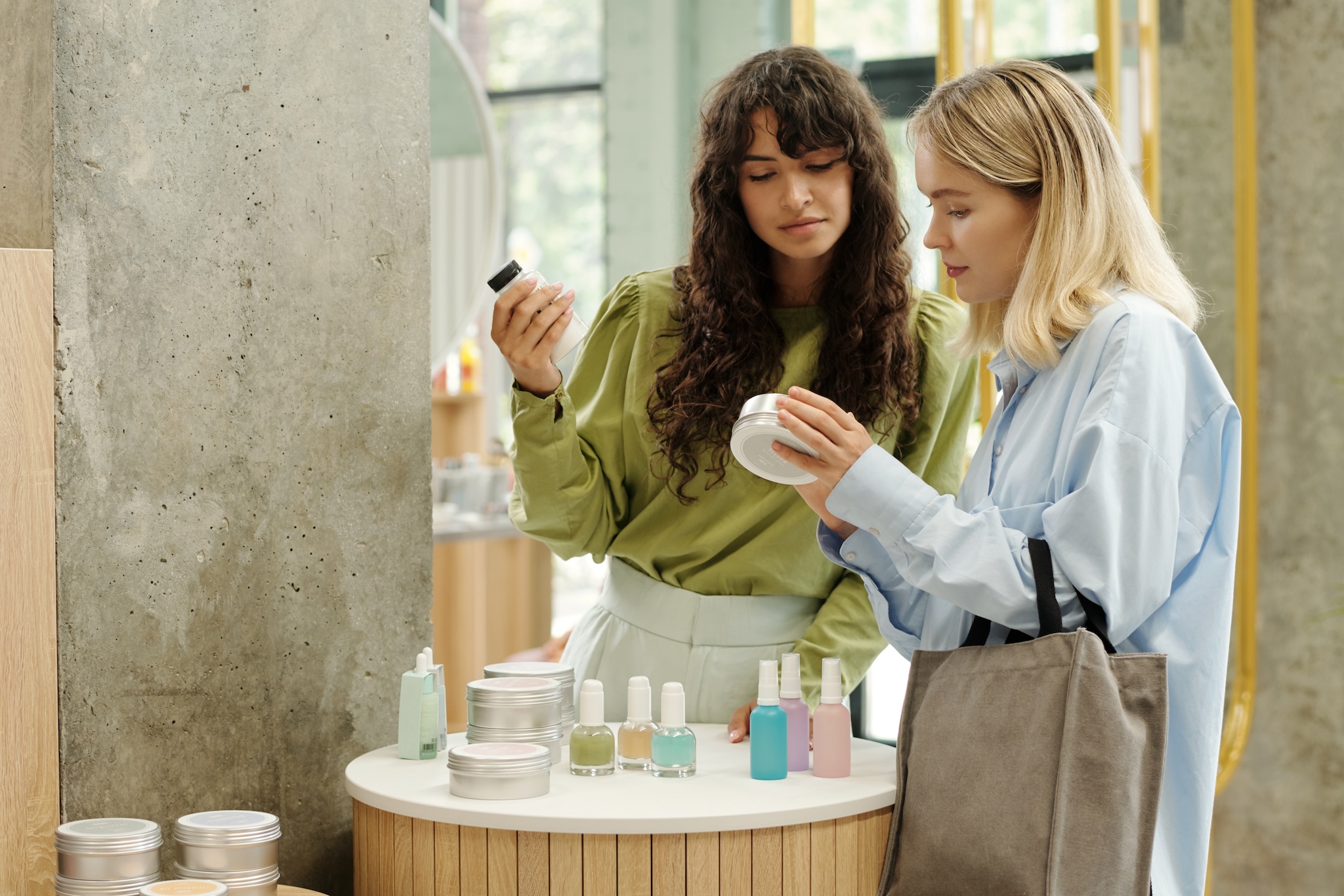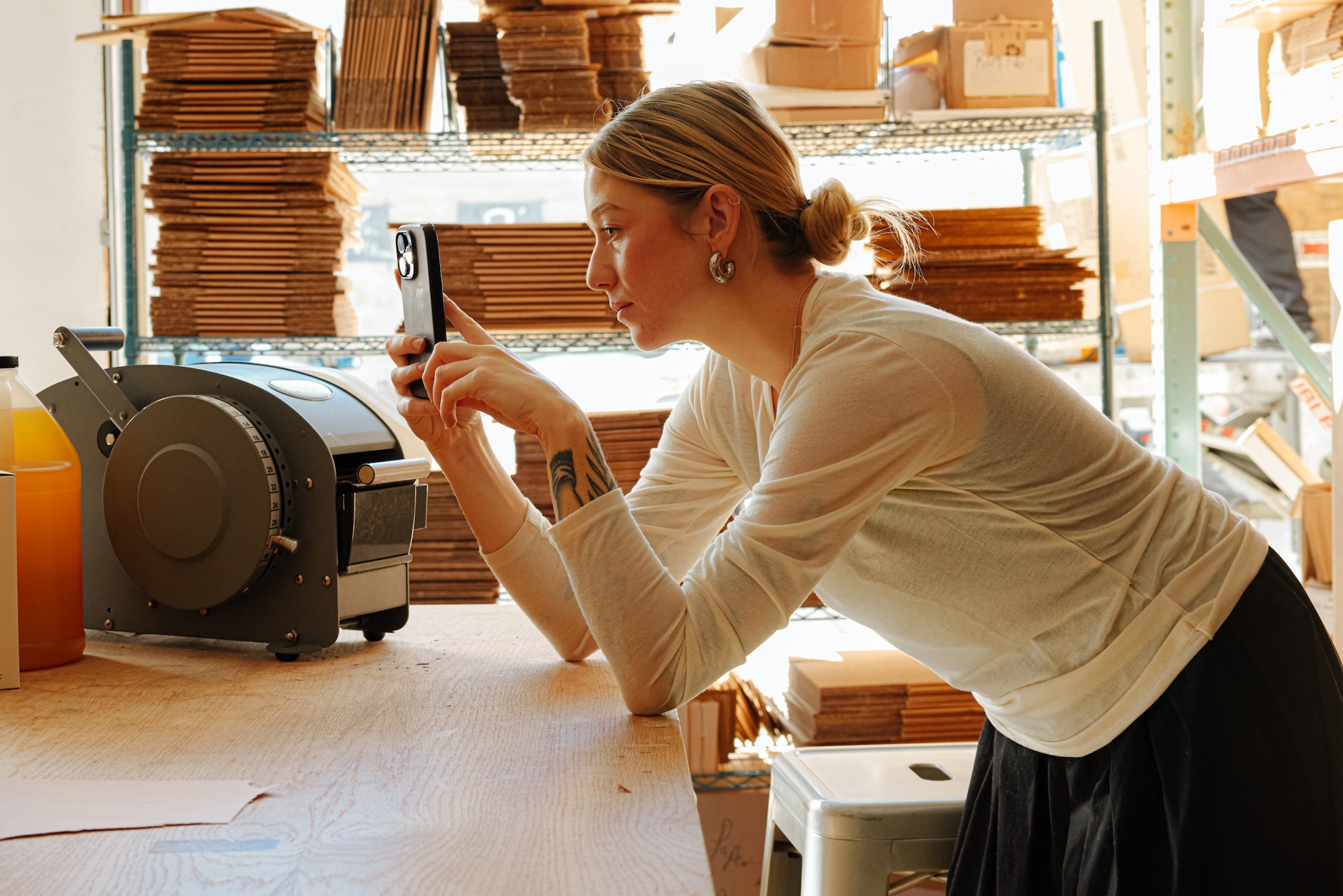

We can’t gloss over the challenging times we’re facing at the moment. There’s a lot going on, but our latest report shows that independent retail is in a good position to come out on top. As the backbone of local economies, stores can tap into emerging technology and foster tight-knit communities to make the most of their increasingly important role in people’s lives.
While retailers might have a less-than-positive outlook, our recent research into independent retail in Britain shows that almost three-quarters of consumers believe independent businesses can thrive over the next 10 years with the help of digital tools for sourcing products, running operations and making gains in this uncertain climate.
To help you better deliver for your shoppers and community, we’ve compiled a guide to seven things you can do to start preparing your store for the future. It might feel like you’re running uphill through treacle right now, but these are the measures you can put in place to make sure you thrive moving forward.
1. Lean into digital innovation and embrace technology
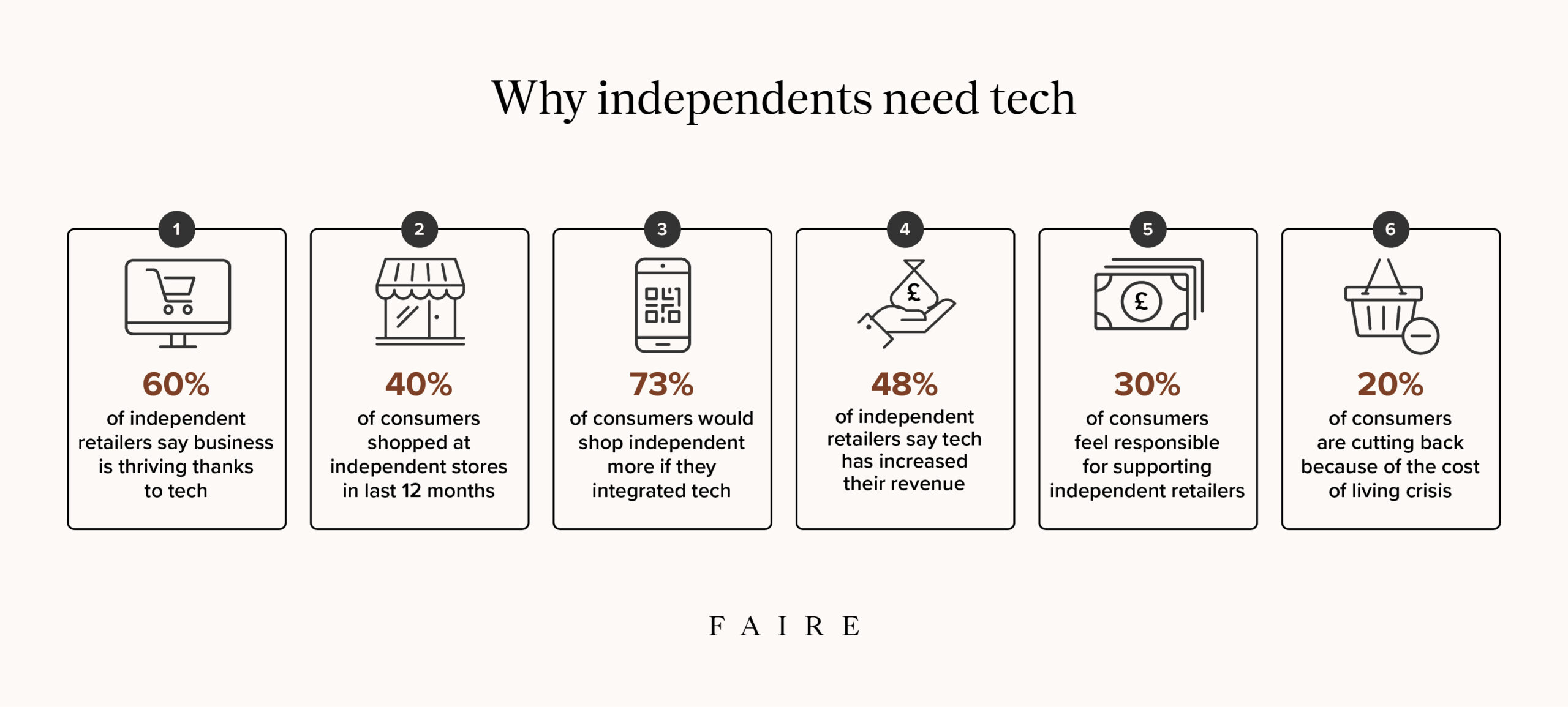
Many independent retailers are taking advantage of no-code tech tools that make it easy to automate and carry out important behind-the-scenes tasks. This goes beyond your typical e-commerce platforms and extends to tools for email marketing, operations, customer service and post-purchase experiences, creating deeper relationships and better experiences for customers across the board.
Our research showed that three-quarters of shoppers are more likely to shop at independent retailers that incorporate at least one digital service. On the retailer side, 60% of independent stores say business is thriving thanks to tech, 48% say implementing technology has increased their revenue and 39% reported better customer satisfaction since using technology.
How to embrace technology
Start small by cherry-picking one or two tools that can automate some of your most repetitive and tedious tasks. Here are a few ways you can slowly start introducing tech to your store:
- Use customer-facing technology: 90% of retailers use technology to take payments, 85% use a sales platform and 76% use marketing software. Automating these processes can free up a ton of time, get more eyeballs on your products and create better customer experiences.
- Create a hybrid experience: 64% of consumers would like the ability to shop digitally and in-store, while 29% of UK adults favour a hybrid model. Give shoppers the chance to buy online via an e-commerce website or in-store.
- Don’t forget about back-of-house solutions: 77% of retailers use tax and accounting technology, 57% use analytics tools and 57% use inventory management technology. Consider technology that will help speed up your backend processes.
- Compete with household names: 20% of independent retailers who have adopted at least one form of technology believe it helps level the playing field with big-box retailers.
2. Create a community
Digital advancement has made us all crave deeper connections, and the pandemic has certainly increased our want (and need) for real-life human relationships – something that independent retail stores are well-positioned to offer.

Our research found that 40% of consumers believe the main purpose of in-store independent retailers is to create and grow a community, with 20% agreeing that indie shops “provide a space to catch up with locals”. This shows that independent stores are so much more than simply places to buy products. They’re community hubs, meeting places and spaces to learn and laugh.
How to create community within your store
Community looks different for everyone, but if we read into the results from the research, it’s clear that today’s shoppers want something more than “just a shop”. They want a place to hang out, to catch up with friends and to meet new people.
Here are some ways you can foster a sense of community:
- Partner with local businesses: Offer pop-up shops, run combined giveaways and promote other businesses in close proximity.
- Build an online community: You’re not just limited to in-person communities. Facebook groups are a great way to bring together locals who might otherwise never meet.
- Share local news: Local people like hearing local news. Use local events to promote your store and share local stories that resonate with shoppers.
Love Record Stores ran a post-pandemic hashtag campaign to encourage people to buy local records. The initiative involved multiple local record stores, led to £1 million in sales and created mini-communities around record stores everywhere from Liverpool to Brighton and Glasgow.
3. Increase product visibility
There’s nothing quite like wandering into a local store and coming across a delightful product you simply wouldn’t have found in a chain store. For many independent retailers, the emphasis is on selling locally made products means that each time a customer visits a store, there’s a chance for them to discover something new and exciting.
Our research found that consumers often choose to shop in independent stores to discover new products. Sixty-four percent said independent retailers introduced them to products they otherwise wouldn’t have found. This number was even higher in the LGBTQ+ community, with 77% agreeing that indie shops were a great way to find new products.
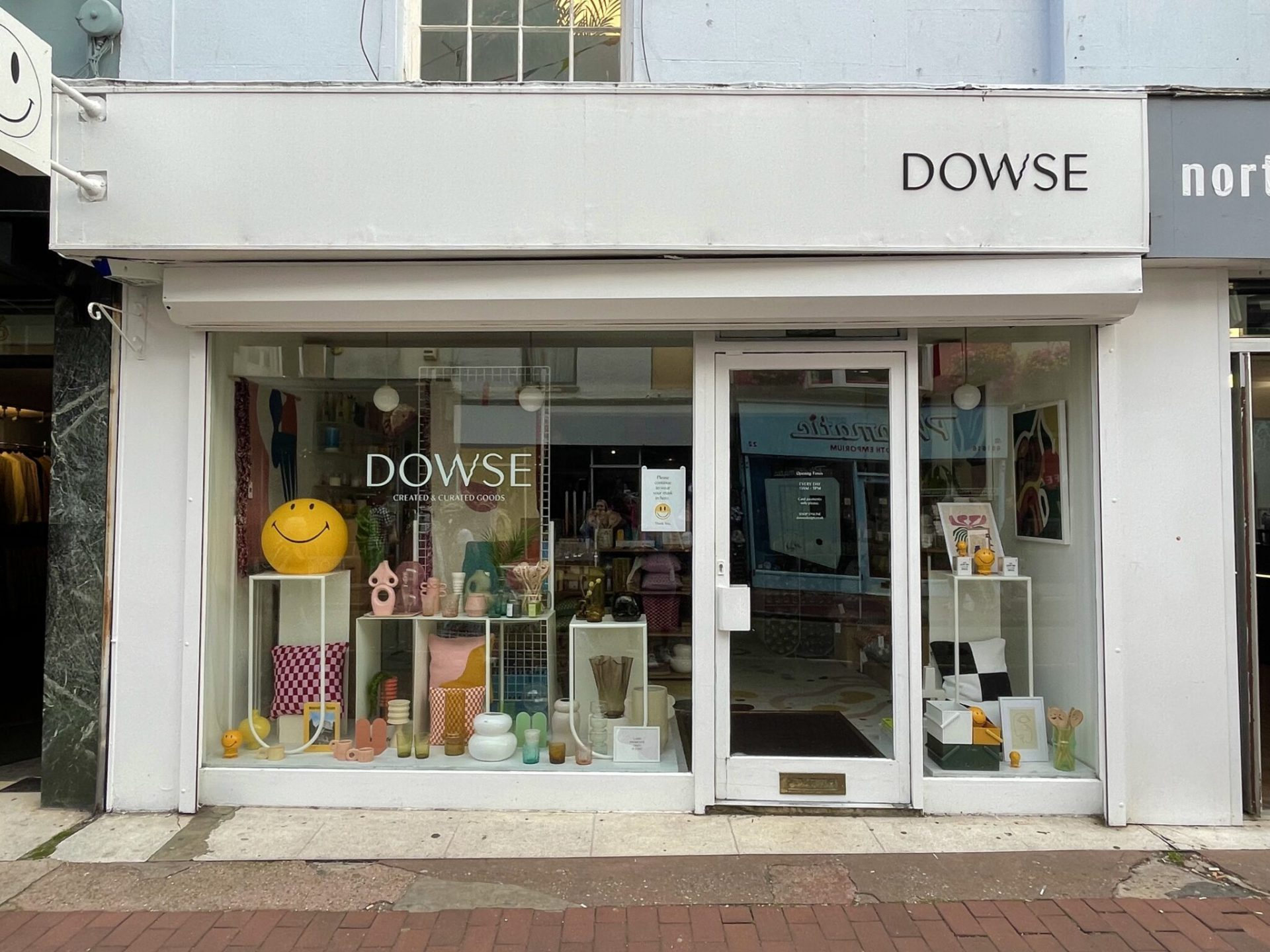
How to increase product visibility
While large marketplaces have brought global stores closer to home, there’s still something beautiful about discovering a delightful knickknack right on your doorstep.
Here’s how you can increase product visibility:
- Upsell and cross-sell: Introduce shoppers to similar or complementary products based on their previous purchases. You can do this in-store by word-of-mouth recommendations, or you can use a digital tool to automate the process. For example, automated email marketing sequences are a great way to stay in touch with shoppers and promote your latest product lines.
- Maximise your window display: Regularly rotate your products so that lesser-known items still get their time to shine.
- Run new product promotions: Let customers know about your latest product line via email, posters and cross-promotions with other local businesses.
- Offer an incentive: Encourage local referrals by awarding customers a prize or discount if they successfully tell a friend about your store.
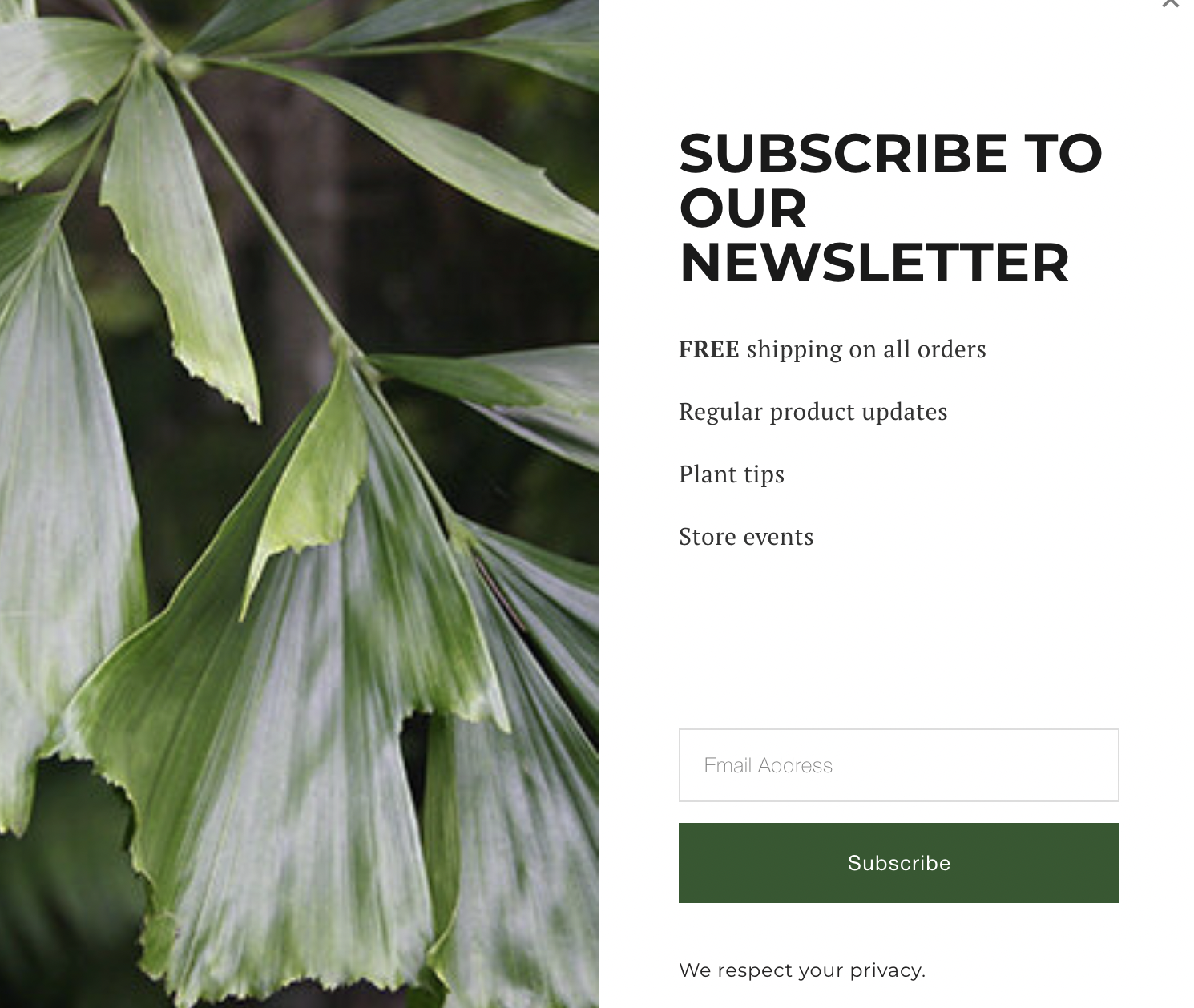
4. Personalise customer communication
The beauty of new technology means you can personalise the customer journey based on shopper characteristics and behaviour. And, in-store, you can offer a personal touch by sharing personalised product suggestions.
Twenty-four percent of surveyed consumers say they shop at independent stores to enjoy a curated experience, while a further 42% say they enjoy “being able to request specific products from shop owners”.
How to personalise customer communication
Customer communication happens online and in-store, so it’s important to consider both platforms and how you can personalise each. Here are some ways you can do that:
- Use a personalisation tool: Lots of email marketing providers make it possible to segment shoppers and send relevant emails based on their previous purchases and loyalty level.
- Ask for feedback: Encourage shoppers to share feedback in-store or online and use their answers to send a personalised response.
5. Create omnichannel experiences
It’s no surprise that technology has changed the way people shop. New-found choice means we can replenish our favourite face cream from the comfort of our sofa just as easily as we can pop into our favourite store. In the future, the most successful retailers will be able to seamlessly merge the two in a slick omnichannel experience.
According to our research, 35% of adults are more likely to shop at independent retailers if they have the option to check availability online, while 31% will happily take advantage of click-and-collect opportunities.
How to create omnichannel experiences
Omnichannel experiences are more than creating a hybrid shopping experience. They should ideally make it easy for customers to choose their preferred method for interacting with you, buying from you and returning any orders. Here are some ways you can ensure you’re providing a delightful omnichannel experience:
- Show in-store availability online: There’s nothing worse than going all the way to a shop only to find it’s sold out of the product we want. Let customers see stock levels before they venture out by showing the status of a product on your website.
- Provide a click-and-collect option: Give shoppers the chance to buy a product online and pick it up in-store.
- Offer online support: Make it easy for shoppers to contact customer support online or send back a product they bought in-store without having to come back to your shop.
6. Host in-store events
One of the key differences between local, independent retailers and chain stores is the intimate feeling that comes with a space that’s so much more than just a shop. As shoppers seek out human connection, they’re actively looking for places to learn, meet friends and spend time.
In-store events can be a great way to build a community and increase brand awareness at the same time. Our research found that 49% of consumers would attend an event thrown by an in-store independent retailer, with 19% saying they already have. The reasons vary, with 61% saying they’d like to try new products, half saying they want discounts, 43% saying they want to discover new brands, and more than a third saying they want to socialise with their community.
But it goes deeper than that. Thirty-nine percent of shoppers said visiting independent retailers makes them feel less alone, and 46% said it makes them feel more at peace. When you look at it this way, it’s clear that local stores are more akin to well-being hubs than their larger chain alternatives.
How to host in-store events
We have a comprehensive guide on running in-store events, but here are some top-level ideas to get you started:
- Host a launch party: Get shoppers together when you launch a new product or product line.
- Schedule meetups: Encourage locals to come together by hosting casual meetups – you can even partner with other local businesses for food and drink.
- Run workshops and classes: Provide learning experiences by bringing in local artists, makers and speakers to share their expertise, either in a hands-on way or a seminar.
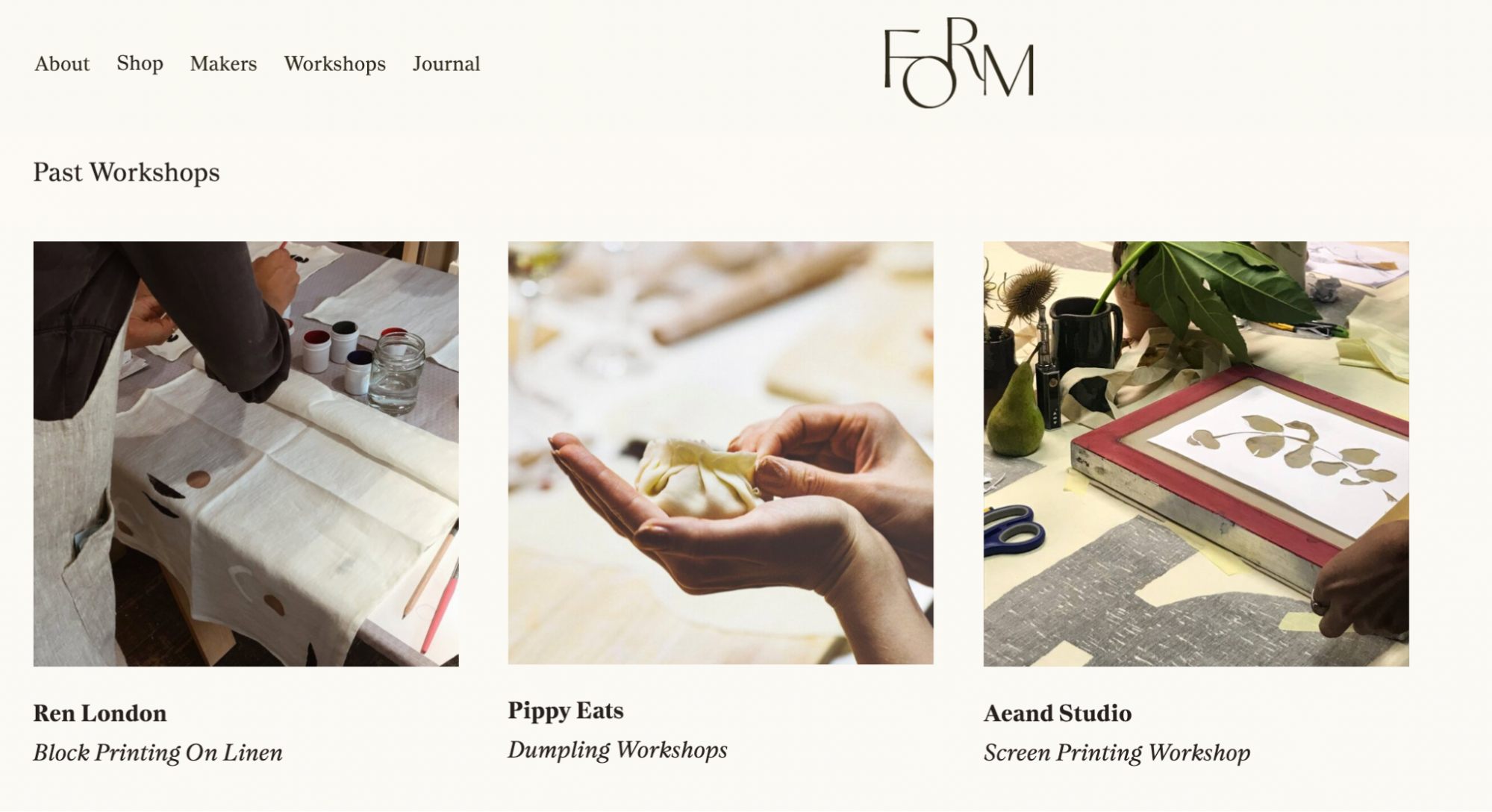
7. Focus on sustainability
Local shoppers are actively choosing brands that prioritise social good. Thirty-two percent of retailers say that using sustainable materials and supporting eco-friendly initiatives allows them to reduce their carbon footprint, and 20% say they provide more sustainable products now than before.
This trend will continue to grow in the future, with consumers becoming increasingly aware of their impact on the planet.
How to make your business more sustainable
Sustainability is about more than just using products made from natural materials. It’s about supporting local communities, reducing carbon footprints and working with charities that are doing good. Here are some ways you can increase your sustainability efforts:
- Sell local products: Partner with local artists and makers to reduce the carbon footprint of buying from abroad.
- Focus on natural materials: Make sure the products you sell are made from natural, sustainable materials and ingredients.
- Partner with local charities: Team up with charities and show your support for do-good initiatives.
- Contribute a portion of your revenue: Share a cut of your revenue with charities that you fully support.
Get ready for the future
Times might seem uncertain now, but there’s still very much a need for independent retailers. Our research shows that consumers still actively seek out local stores and, in many cases, prefer buying from indie shops rather than large chain alternatives.
If you’re ready to future-proof your business, start implementing some of the suggestions we made here. You can browse Faire’s huge selection of locally sourced sustainable brands and locally made goods to get started.
Methodology
This research was conducted by Opinium Research on behalf of Faire via two online surveys between 30 January 2023 and 8 February 2023. This included one sample of 100 independent retailers (<50 employees) and one sample of 2,000 UK adults nationally representative of the UK population.

